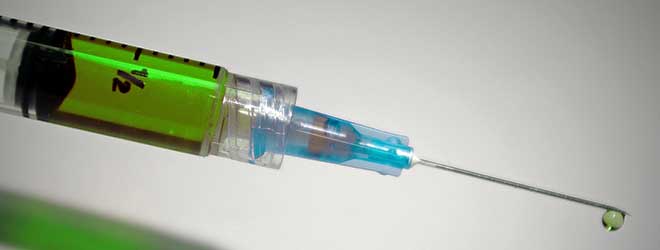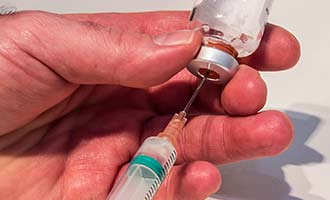 Negligent storage or other irresponsible practices in the workplace can lead to needle-stick injuries. The Centers for Disease Control & Prevention have estimated that a thousand health care workers are affected by needle-stick injuries every day. The New England Journal of Medicine published a study revealing that an estimated 600,000 to 800,000 needle-stick injuries are reported annually among U.S. health care workers (i, ii).
Negligent storage or other irresponsible practices in the workplace can lead to needle-stick injuries. The Centers for Disease Control & Prevention have estimated that a thousand health care workers are affected by needle-stick injuries every day. The New England Journal of Medicine published a study revealing that an estimated 600,000 to 800,000 needle-stick injuries are reported annually among U.S. health care workers (i, ii).
Have You Suffered From Any Needle-Related Injuries?
Call for a Free Case Evaluation Today!
 Such needle related injuries pose serious risks to health care professionals. These types of injuries are considered an occupational hazard in the medical community and are events of concern due to the risk of transmitting blood-borne diseases. Injuries may occur while treating and administering medication to patients, or during the cleanup and storage of equipment.
Such needle related injuries pose serious risks to health care professionals. These types of injuries are considered an occupational hazard in the medical community and are events of concern due to the risk of transmitting blood-borne diseases. Injuries may occur while treating and administering medication to patients, or during the cleanup and storage of equipment.
Most Common Causes of Needle-Related Injuries:
- Errors in drawing blood
- Errors in administering intravenous drugs or treatments
- Errors with needle re-capping (25-30% of all needle-stick injuries)
- Failure to place needles in approved sharps containers
- Errors in use of needles
- Errors in disassembling needles/syringes
- Inexperienced health care staff
- Transferring a body fluid between containers
Dangers as a result of accidental needle-sticks may be present in several health care facilities. A person may be injured as a result of a needle-stick in doctor’s offices, hospitals, clinics, nursing homes, and labs. Some hospitals report that one-third of nursing and laboratory staff suffer these injuries each year (iii). Estimates of these injuries may even be low due to under-reporting because those who experience a needle-stick may not have time to report it, or may feel embarrassed telling another health care professional.
Health Problems Which May Arise, and Dangers Presented by Needle Injuries May Include:
- Malaria
- Tuberculosis
- HIV/AIDS
- Hepatitis B
- Hepatitis C
- Herpes
- Diphtheria
- Syphilis
- Typhus
 Preventing needle-related injuries is the most effective way to protect individuals from the blood-borne diseases that these accidents may transmit. Comprehensive needle-stick injury prevention programs could spread awareness to help minimize occurrences of these injuries and their associated risks.
Preventing needle-related injuries is the most effective way to protect individuals from the blood-borne diseases that these accidents may transmit. Comprehensive needle-stick injury prevention programs could spread awareness to help minimize occurrences of these injuries and their associated risks.
How Can Needle-Related Injuries be Prevented?
- Avoid the use of needles where safe and effective alternatives are available
- Employee training
- Recommended guidelines
- Safe recapping procedures
- Effective disposal systems
- Surveillance programs
- Improved equipment design
- Use blunt-tip needles
- Raise awareness about the risk of exposure to blood borne pathogens from needle-sticks
- Use of safer medical devices
- Use of needles with safety features
- Report all needle-stick and sharps-related injuries promptly to ensure that you receive appropriate follow-up care
- Tell your employer about any needle-stick hazards you observe
- Get a hepatitis B vaccination
 Medical malpractice, such as needle related injuries, usually can be avoided and often arises as a result of careless error. If you or a loved one has been affected by a needle-stick as a result of error or other cause, you need a law firm that can handle these cases.
Medical malpractice, such as needle related injuries, usually can be avoided and often arises as a result of careless error. If you or a loved one has been affected by a needle-stick as a result of error or other cause, you need a law firm that can handle these cases.
Sources:
- (i) New England Journal of Medicine. 2007.
http://www.nejm.org/doi/full/10.1056/NEJMoa070378 - (ii) Centers for Disease Control & Prevention. 1997.
http://www.cdc.gov/niosh/docs/2000-135/pdfs/2000-135.pdf - (iii) Canadian Centre for Occupational Health and Safety. 2005.
http://www.ccohs.ca/oshanswers/diseases/needlestick_injuries.html
